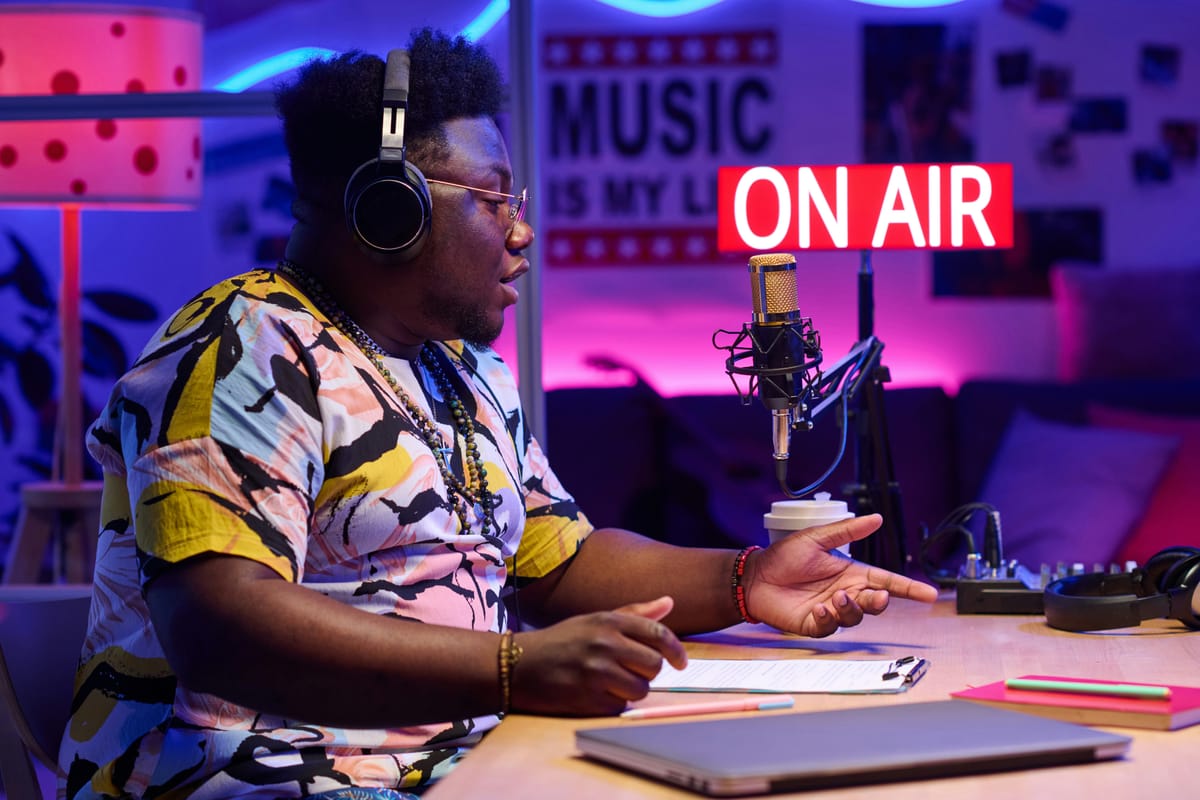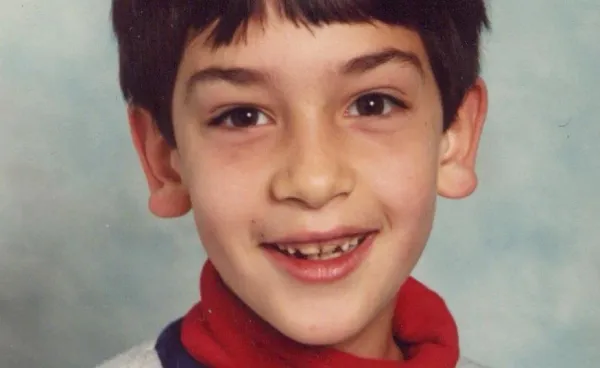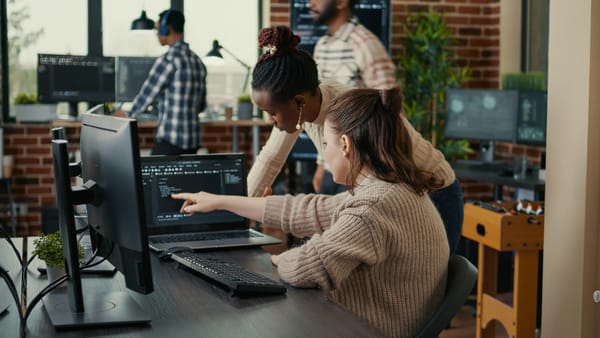If I ran NPR and PBS
Building community-driven public media for the post-federal funding era.

Last week, Congress voted to roll back $9 billion in public media funding and foreign aid. The impact on public media in the United States is profound: the cuts include $1.1 billion to the Corporation for Public Broadcasting, which completely cuts federal support for NPR, PBS, and their member stations.
The immediate question for NPR, PBS, their member stations, and the communities that depend on them is: what now?
I believe there are a few steps they could take.
Over the last few months, I’ve been running a series where I explore, as a thought experiment, how I might approach running services in the public interest: so far, this has included Bluesky, Mastodon, my own platform, a fund for decentralized social media, and Twitter / X. In the wake of these cuts to American public media, a number of readers asked me to extend my series to include how I might approach running both NPR and PBS.
I’m a technologist and entrepreneur who has spent over a decade working with, for, and in American media. As the first employee at Latakoo, I helped build a system that allowed TV journalists to more easily send footage back to newsrooms, with the content already formatted according to each newsroom’s standards. At Known, we worked with San Francisco PBS and NPR affiliate KQED to build an award-winning learning platform for teachers. At Matter, I helped run an accelerator for early-stage media companies in partnership with KQED, PRX, and the Knight Foundation, among others, and taught venture design to both startups and our partners. More recently, I’ve led technology inside non-profit newsrooms, first at The 19th and currently at ProPublica.
Through this work, I've developed relationships across the public interest media ecosystem, so I want to make one thing explicit. This post is, like the others, a thought experiment. None of my posts are a criticism of leadership (with the exception of the one about X, because, you know), and nor are they meant to imply that their leaders don’t already have smart solutions of their own. Instead, I want to surface different ideas and widen the conversation. I only have the deepest respect for the people who run public media, and I hope they will take this piece in that light. This is a stressful time — not least because the jobs of amazing people who have dedicated their careers to public service are on the line — and my intention is not to add to that stress.
It’s also worth noting that NPR and PBS are separate organizations. In this post, I’ll be considering them together: as you’ll see, I think convergence is part of the likely solution. But it’s important to remember that they each have their own budgets and funding.
First, I’ll explore what NPR and PBS are, how they are funded, and the implications of these funding cuts. Then how I’d go about mitigating them and building for the future.
How does American public media work?
Public media in America is very different to most countries, and receives significantly less government funding. Whereas the British Broadcasting Corporation receives around £100 ($134) in government funding per person per year, the US spent around $1.50 on public media before it was defunded completely. And rather than one large organization, the US public media landscape is a decentralized patchwork of individual stations. Like the country itself, it’s federated.
The public media brands you’re most likely to recognize are NPR and PBS. These are separate organizations. National Public Radio is a radio network that distributes audio programming to member stations; the Public Broadcasting Service is a television network that distributes video programming to its member stations. In both cases, stations pay a fee to be a part of the network and receive programming in return, but they are independent organizations, and retain their own editorial control. There are also independent marketplaces for content like PRX and American Public Media that help distribute shows to public media stations.
The Corporation for Public Broadcasting — the thing that was just defunded — was established in 1967, a few years before NPR and PBS, to support public media across the country. It received a small (around 0.01%) portion of the federal budget each year and spent most of its money on supporting local stations, with the bulk of the remainder spent on NPR and PBS themselves. It also awarded grants for innovation in the space and projects aimed at underserved communities.
Funding cuts disproportionately hurt rural America
Stations in bigger cities don’t tend to rely as much on federal funding: they have a bigger potential member-base to draw on, and are more likely to receive support from local foundations. It’s the stations in rural communities that are really hard-hit by funding cuts. Federal funding represents 7% of the budget for KQED in San Francisco; for Allegheny Mountain Radio, which serves rural counties on the border of Virginia and West Virginia, it represents 65%.
As NPR reported, the station is an important conduit for local information that doesn’t have any real alternatives:
Some people here say they really value the news and community information Allegheny Mountain provides. Jay Garber, mayor of the town of Monterey, Va., says the radio remains the fastest way to let citizens know about everything from water main breaks to road closures.
Places like these are also the locations where broadband and mobile internet are scarcer, and where radio and television are a lifeline: the best way to understand what’s happening locally and receive safety alerts.
Not only will these communities lose that much-needed information, when a community doesn’t have adequate local news, it often experiences increased political corruption. There are real knock-on effects for citizens of these communities: a lack of scrutiny leads to more opportunities to be exploited.
In a world where these stations go away, there will be anti-democracy alternatives waiting in the wings. Networks like Truth Social are designed to be alternatives to America’s existing information infrastructure, providing media that is tailored to an autocratic worldview. Removing public media, along with bringing commercial networks like CBS in line, is part of changing the overarching media narrative in the United States.
So, if I was in charge of NPR and PBS, what would I do about it?
First: triage
The most important immediate problem is the shortfall in support for rural stations. Given the stakes, public media needs to move quickly to preserve the most vulnerable parts of the system.
Grassroots sites like Adopt a Station are already trying to build support for individual stations from the donating public. There’s energy here: huge portions of the public want to help. The public media networks can harness this energy to drive donations and help prevent news deserts from being created in rural areas.
I would start immediately; time is of the essence. The first step, within a month or two, would be to prioritize stations by a combination of vulnerability and likelihood to create a news desert in their absence. These would be tiered into those that can survive independently, those needing moderate support, and stations facing closure, with stations with no alternatives in their localities first in each category. I’d then launch an accelerated fundraising campaign targeting major donors, foundations, and corporate sponsors specifically aimed and preserving the stations that were most in need.
It would probably look a lot like the campaign that’s already underway:
NPR hasn’t minced words. “This decision is devastating for the millions of people who rely on public media every day,” a pop-up on its website reads. The organization has also inserted a two-minute statement from CEO Katherine Maher in every in-house podcast’s feed, and has been circulating a one-minute video of Maher on social media. The video has nearly half a million likes and 237,000 views on TikTok, for example.
This strategy would start as soon as possible — as has, in fact, happened — and carry on for at least three months. Over time, in addition to messaging broadcast through stations, it would expand to include materials and technology libraries aimed at decentralizing the fundraising campaign. Sites like Adopt a Station could incorporate branding, images, and embedded fundraising code provided by the networks in order to more easily raise money for stations. Similarly, anyone could easily share customized fundraising links on social media, for example to hit their own fundraising goals. Fundraisers who hit a certain level would receive perks — from old standbys of tote bags and T-shirts to invitations to private events and acknowledgement on the air, depending on their levels.
Public media is rightly non-partisan, so the messaging for these campaigns wouldn’t be party political. But they would be pro-democracy, and emphasize the need for media to support communities across the country, as well as the dangers of government trying to undermine it.
Finally, in order to help offset costs for the most in-need stations over the first year, I would raise funding from major national foundations focused on democracy and media, regional foundations with stakes in rural communities, and corporate sponsors aligned with public service missions. Content and network membership costs for those stations would be reduced for the duration of the time they were under threat of closure. It wouldn’t replace the whole budget, but it would at least cut into costs and give stations a greater chance of survival.
Next: community
Public media should have community at its heart. Local media, of course, is all about community: rather than thinking of their listeners or viewers as an audience, stations should think of them as a community that they can interact and build relationships with directly. But the public service nature of public media can also extend to seeding its platforms and content as things it can co-create with its communities, too.
I would quickly make sure that every department at the networks is thinking like a product team: that is to say, prioritizing the needs of their stakeholders, ensuring that they understand what those needs are through rapid research and real-world prototype-driven testing rather than relying on internal assumptions and perspectives, and using an iterative process. Each team needs to test its assumptions and work with real-world stakeholders like listeners and donors as they make incremental improvements towards hitting defined objectives and key results (more on those in a moment). Design techniques like using aggregated personas would be banned; instead, every major development would need to be prototyped and tested with real people in the community.
Initiatives like the JR3 project, which seeks to reconsider journalism’s role in the current era and given the increasing prevalence of news avoidance, are a step in the right direction, and would be built on, with wider participation, anchored in real-world qualitative research into real people. Reflection and ideation would be encouraged, but the people being served by journalism would always be the referee and the center of gravity for every decision. Ideally, new initiatives would be co-created with them.
Once key leaders at the networks had rapidly mastered this kind of human-centered, prototype-driven thinking, it would be offered to the stations for free. I would hire Corey Ford to run week-long media venture design thinking bootcamps for leaders at at-risk media stations, and then retain support at the network level to provide ongoing mentorship for them.
The networks create safe community spaces as a way to help solve the stations’ most pressing challenges. Experts from across media, technology, and other relevant industries would be brought together to help figure out how to solve existential problems. This wouldn’t be slick consultancy arrangements; leaders across industries would give their time to support a bedrock of democracy, and have no-nonsense facilitated conversations that would move stations forward quickly. Those could evolve into direct, ongoing relationships between those leaders and the stations, or they could remain informal or temporal.
Finally, those network OKRs would be tethered to an aggressive three-year plan that would center on finding more individual members, building sustainable revenue, and removing dependence on proprietary platforms.
Removing dependence on proprietary platforms
Public media networks have offered their stations centrally managed content management systems and other software for years. But many of those systems are closed and one-size-fits-all: for example, NPR offers a CMS called Grove, which replaced its homegrown Core Publisher offering five years ago. Grove has lots of features that stations might find useful, and its central management means that new features roll out to many stations at once, but is based on Brightspot, a commercial CMS. If there need to be changes or customizations, stations need to work with Brightspot, and they may find there’s a hefty price tag. Brightspot also doesn’t have great answers for posting to new networks like Bluesky or to use more experimental web features.
Just as the networks should be safe spaces where stations and experts can collaborate on experiments with business models and strategy, they should also foster collaboration on platform. There is a universe of mission-driven open source projects and engineers ready to help these stations.
This isn’t new for media: for example, the Tiny News Collective, which supports newsroom startups, works with the open source Ghost team to provide a great CMS. Ghost is more suitable for smaller newsrooms, but because it’s open source, newsrooms don’t have to use the hosted service Tiny News Collective provides. They can graduate to their own as they grow, customizing its code, and eventually porting themselves to another CMS if they want — all without being locked into a particular provider. Newspack, a CMS for news based on WordPress, offers similar freedom. Open source projects would be paid to provide hosted infrastructure. Again, this isn’t new: Tiny News Collective includes Ghost Pro, while Newspack sits on top of Automattic’s WordPress hosting.
I would create space at the networks to bring together mission-driven developers and technology organizations in order to solve station problems — which, remember, were discovered through real-world research and testing with members of their communities. The stations get ready-made technology; the projects get exposure to validated, real-world problems and a set of users who need their work.
These wouldn’t just be solutions to external problems like content management system features and fundraising support. Projects would also include solutions for internal problems like easier analytics and secure management for tips from sources. The work would be funded by a combination of the networks themselves and the larger stations. It would always be released under an open source license, inviting collaborators, users, and donors from outside public media.
The result would be stronger, more innovative, more resilient platforms, produced at a lower cost.
Convergence
NPR and PBS were both authorized (alongside the CPB) by the Public Broadcasting Act of 1967. At the time, it made sense for radio and television to be treated separately: these were two very different mediums with different needs and different legacies.
In 2025, that distinction isn’t so clear. NPR creates video content, like the excellent Tiny Desk Concerts. PBS, in turn, creates a range of audio podcasts, like the News Hour, which is also broadcast on some public radio stations.
Both publish on the web: a technology that supports audio, video, text, interactivity, immersive worlds, and more. Public radio and television both still have — and need to have — analogue content transmission, but they are now more alike than they are different. Not only should they share content production resources, but also fundraising and business resources, and even marketing plans.
Costs will be saved by avoiding duplication. I don’t mean laying people off: combining efforts on functions like fundraising, accounting, product, and technology infrastructure would create efficiencies and allow for more sophisticated strategies. Research conducted with listeners of a rural public radio station could be applied to public television — and removing the artificial separation of broadcast technologies would free both networks up to work on new media initiatives in collaboration with each other.
I’m not proposing a formal merger. But there are ways two independent organizations can collaborate more closely.
Community convergence
And then we go back to the communities.
Organizations like Hearken have made it more possible for the public to participate more fully in the public media that serves them. Hearken helps newsrooms crowdsource story ideas and involve communities in editorial processes; this should be at the core of the future of public media. Not only should the public be involved in reporting on their communities, but they should be trained in building media for their communities. This is how you get to more representative media that communities are more likely to invest in: you make sure it truly does represent them.
Just as initiatives and platforms should be co-created, so should the content itself. The PRX Podcast Garage is an example of how public media organizations can work with communities in order not just elevate their voices but train them to elevate themselves. The networks should aim to provide more opportunities along these lines, and work towards an OKR that defines a percentage of total work that should be co-created — for example, 33% within three years.
This doesn’t need to be limited to streaming media like audio and video. I’d direct the networks to support grassroots local newsletters and blogs, embracing tools co-created with open source communities in order to create a decentralized commons for local news. These would sit on networks based on ActivityPub and the AT Protocol, allowing voices to more easily be shared throughout social media without losing direct ownership of their work and social relationships.
Finally, the networks should provide toolkits for in-person, local events, allowing stations to facilitate community in their areas safely.
Each of these acts of co-creation would flow from the network to stations to individuals. The network would create toolkits and provide platforms (in collaboration with outside experts, open source communities, and other volunteers); the stations would choose to use them as they saw fit; individuals could then take the opportunity to engage.
Sustainability and the commons
These resources — platforms, materials, techniques, infrastructure — wouldn’t just be useful for grassroots communities. There’s a world where they also become useful for corporations and other large profit-making enterprises. While grassroots organizations and communities should receive them for free, larger for-profit enterprises should pay for them. This could be through a sponsorship model, or it could be through direct licensing payments. But widening the tent would help to bring in new funds to support it all.
By turning public media into a commons that is co-created with communities at every level from the national to the hyper-local, we create cost savings, establish new opportunities for financial support, and better anchor local media to real-world needs. We also make it more resilient: each of these pieces is released openly, under an open license, allowing it to live on should the networks or stations eventually disappear.
But let me be clear: public media does not need to be profitable. There will always be a need for both institutional and individual investment, and it would certainly be far better if the federal government resumed its support. (Hopefully it will again in the future, under a more community-minded administration.)
Similarly, not every station can be sustainable, and this fact is independent of each station’s value to its community. Sometimes, particularly in rural areas, a station can be a vital lifeline, but also impossible to run sustainably in its own right. This is where the networks come into their own. It’s vitally important for larger, wealthier stations to help pay for smaller, more vulnerable ones.
Onwards
Public media is vital infrastructure. Without it, democracy is weakened. The act of defunding it isn’t just a crisis for the media companies themselves, nor even just for the communities that will become news deserts without this support. It’s a crisis for American democracy itself. There’s no silver lining here.
But there are ways networks, stations, and the communities they serve can re-orient themselves, becoming more open and collaborative to conserve resources while providing new services that deepen their democratic service. All is not lost: while the status quo might not be sustainable, there’s much to be gained by rapidly innovating without losing the public service soul that makes it so special.
As I said at the beginning, this has been a thought experiment. I don’t run NPR or PBS, and there are people far smarter than me who make these networks, stations, and communities work at every level, from the C-suite at the networks to the trenches at individual rural stations. These people are superheroes, and they’re already mobilizing with their own plans. I wish them only the best, and I hope, in some way, that this conversation has been useful.



